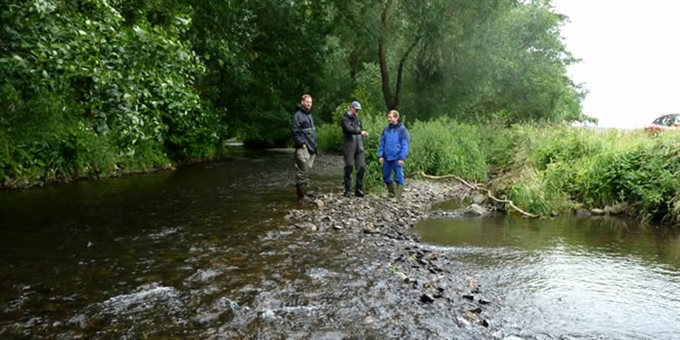About the Project
Hyporheic zones connect surface water and groundwater in river systems. They are important areas of intensive biogeochemical cycling and can act as natural ‘filters’ to separate terrestrial pollutants from river waters. Furthermore, they sustain biodiversity in rivers by playing a key role in fish life cycles and by providing temporary refuge from floods and droughts for invertebrate species.
However, our current knowledge of the physical, chemical and ecological processes that occur within hyporheic zones is limited. In particular, we do not fully understand the mechanisms that cause the formation of hot spots and hot moments (i.e. areas/times of increased biodiversity and biogeochemical cycling) in these zones. This reduces our ability to effectively manage hyporheic environments and to preserve or enhance their resilience to environmental change.
This project brings together an international research team to address these gaps in our knowledge. We aim to investigate how changes in physical streambed conditions control how surface water and groundwater flow through hyporheic zones and in turn alter biogeochemical cycling rates and ecological communities in river systems.
Our research strategy is based on a gradient of river conditions, ranging from surface-water dominated headwater streams with low nutrient availability to nutrient-enriched lowland rivers with significant groundwater inputs. We will conduct nested investigations from plot to stream-reach scales, including:
- Active and passive fibre-optic distributed temperature sensing and advanced geophysical surveys.
- Stable isotope analyses to analyse hyporheic zone exchange flows, thermal patterns and residence times.
- Smart (reactive) tracers of microbial metabolic activity in conjunction with C, N, O chemistry
- Multi-level piezometer nests and diffusion samplers to quantify hyporheic nutrient processing and gas production rates
- Analyses of microbial and invertebrate community structure interaction with physico-chemical habitat properties
 The River Selke, Germany. An upland river with mixed land-use within the catchment and moderate flow regime modification
The River Selke, Germany. An upland river with mixed land-use within the catchment and moderate flow regime modification